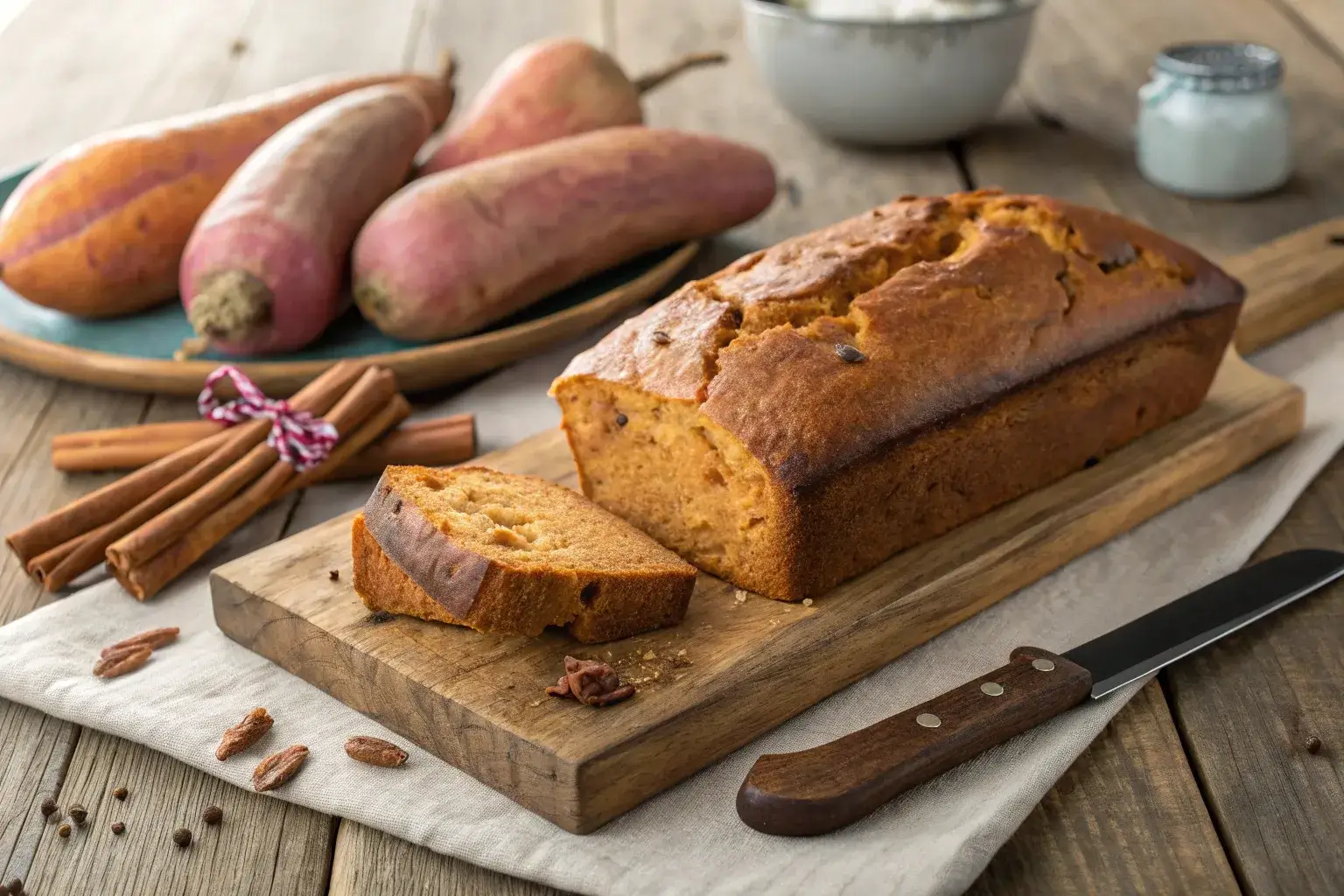Have you ever bitten into something so delicious you had to pause and savor it? That’s the magic of sweet potato bread. With its naturally sweet flavor and melt-in-your-mouth texture, this bread strikes the perfect balance between indulgent and nutritious. Made with real sweet potatoes, it’s packed with fiber, vitamins, and a touch of nostalgia.
But the best part? It’s incredibly simple to make. Whether you’re a seasoned baker or a total newbie, this guide will walk you through creating a loaf that’s moist, flavorful, and downright irresistible. From classic recipes to creative twists, you’ll find everything you need to make sweet potato bread your new go-to baked good. Let’s get baking your taste buds will thank you!
Why You’ll Love Baking with Sweet Potatoes
The Irresistible Taste of Sweet Potatoes in Bread
Sweet potato bread stands out for its naturally sweet and earthy flavor. The mashed sweet potatoes not only bring a subtle sweetness but also create a moist and tender crumb. Unlike banana or pumpkin bread, which rely on stronger flavors, sweet potato bread strikes a perfect balance between sweet and savory.
This unique combination makes it versatile—you can enjoy it as a light breakfast with butter or as a dessert with a drizzle of icing. The addition of spices like cinnamon and nutmeg enhances its taste, giving it a warm, comforting feel that’s hard to resist. If you’re looking for a baked good that’s both wholesome and delicious, sweet potato bread is your go-to option.
Health Benefits of Baking with Sweet Potatoes
Not only is sweet potato bread delicious, but it’s also packed with nutrients. Sweet potatoes are a powerhouse of vitamins and minerals, particularly vitamin A, which supports eye health, and vitamin C, which boosts your immune system. They’re also high in fiber, helping with digestion and keeping you full for longer.
By incorporating sweet potatoes into your bread, you’re not just baking a treat—you’re creating a nutrient-rich dish. To make it even healthier, you can use whole wheat flour and natural sweeteners like honey or maple syrup.
A Brief History of Sweet Potato Bread
Did you know that sweet potato bread has its roots in Southern cuisine? Sweet potatoes have been a staple ingredient in the South for centuries, often used in recipes that call for natural sweetness and heartiness. Historically, baking with sweet potato was a way to make use of leftover sweet potatoes, blending them into dough to create a comforting and satisfying loaf.
Over time, it evolved from a regional favorite into a widely loved baked good, appearing in kitchens across the country. Today, it’s celebrated for its versatility and ability to fit into both traditional and modern recipes. Whether you enjoy it plain or jazzed up with nuts and spices, sweet potato bread is a classic with a rich history.
The Best Occasions for Sweet Bread
Sweet potato bread is the ultimate multitasker. It’s perfect for breakfast when paired with a cup of coffee or tea. Add a little butter or cream cheese, and you’ve got a satisfying start to your day. For lunch or a midday snack, its hearty texture makes it a filling option, especially when combined with spreads like nut butter or honey.
And let’s not forget dessert! Warm up a slice and add a dollop of whipped cream or a sprinkle of powdered sugar for a simple yet indulgent treat. During the holiday season, it shines as a festive addition to your table, whether served as a side dish or a dessert. No matter the occasion, sweet potato bread fits right in.
Your Guide to Baking with Sweet Potatoes
Key Ingredients for Perfect Sweet Bread
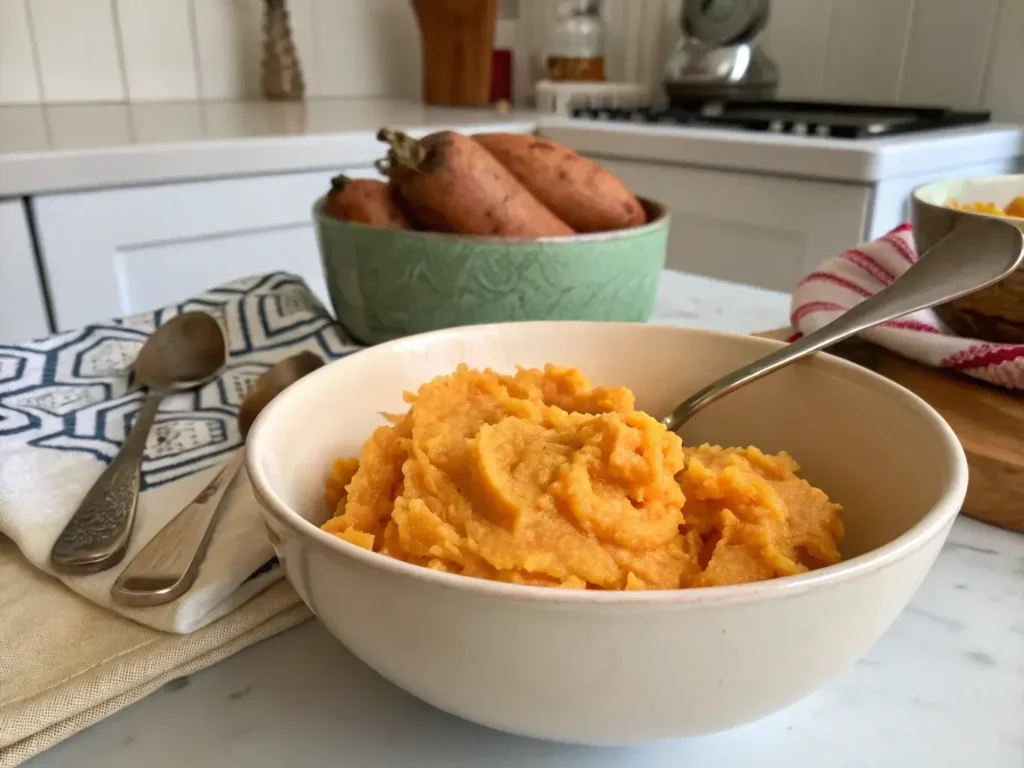
Making sweet potato bread starts with gathering the right ingredients. At the heart of the recipe is mashed sweet potatoes, which provide natural sweetness, moisture, and a rich texture. You can use fresh sweet potatoes that are roasted or boiled, or opt for canned ones for convenience.
In addition to sweet potatoes, you’ll need all-purpose flour, baking powder, and spices like cinnamon and nutmeg to bring out warm, comforting flavors. For sweetness, brown sugar is a great choice, as it complements the earthy notes of the sweet potatoes. Eggs and butter ensure a soft crumb, while vanilla extract adds a subtle depth to the flavor. If you’re feeling adventurous, mix-ins like chopped pecans or chocolate chips can elevate your loaf.
For more delicious baking ideas, check out our guide to Quick and Easy Baking Recipes.
Step-by-Step Recipe for Sweet Potato Bread
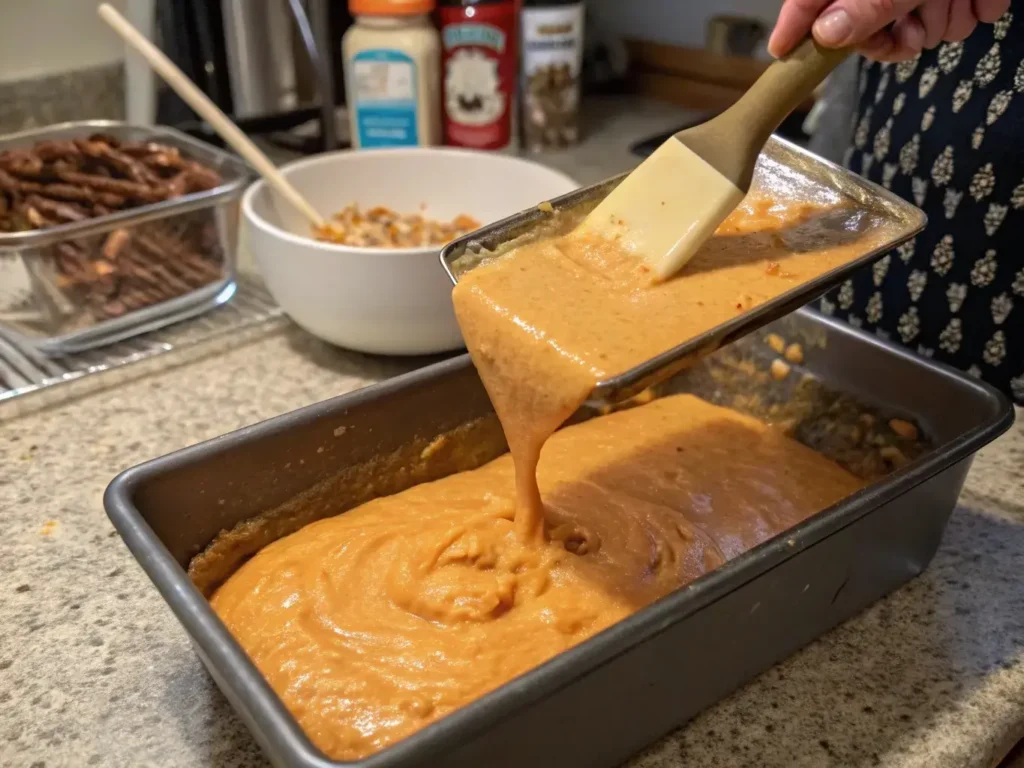
Making sweet potato bread is simpler than you might think! Start by preheating your oven to 350°F and greasing a standard loaf pan. In one bowl, mix your dry ingredients—flour, baking powder, cinnamon, and nutmeg. In another, whisk together the wet ingredients: mashed sweet potatoes, eggs, melted butter, and vanilla extract.
Next, slowly combine the wet and dry ingredients, stirring just until the batter comes together. Be careful not to overmix, as this can make your bread dense. Pour the batter into your prepared pan and smooth the top with a spatula. Bake for 50-60 minutes, or until a toothpick inserted into the center comes out clean. Let the bread cool completely before slicing.
For detailed baking tips, check out this comprehensive bread baking guide.
Common Mistakes to Avoid
Even the simplest recipes for sweet potato bread can go wrong if you’re not careful. One common mistake is using sweet potatoes that are too watery, which can lead to a soggy loaf. To avoid this, make sure to drain boiled sweet potatoes thoroughly or roast them for a drier texture.
Another issue is overmixing the batter. This can develop too much gluten, resulting in a dense and chewy bread instead of a light and tender crumb. Also, don’t forget to measure your ingredients accurately—too much flour can make the bread dry, while too little can cause it to collapse. Lastly, always test the bread for doneness before removing it from the oven to ensure it’s fully baked.
Tips for Storing Your Sweet Bread
Sweet potato bread is best enjoyed fresh, but it also stores well for later. To keep it moist, wrap the loaf tightly in plastic wrap or store it in an airtight container. It will stay fresh at room temperature for up to three days. For longer storage, refrigerate it for up to a week.
If you want to freeze your bread, slice it first for easy portioning. Wrap individual slices in plastic wrap and place them in a freezer-safe bag. This way, you can grab a slice or two whenever you need a quick snack. To reheat, simply pop a slice in the microwave for 20-30 seconds or warm it in the oven at 300°F for a few minutes.
Creative Ways to Customize Your Sweet Bread
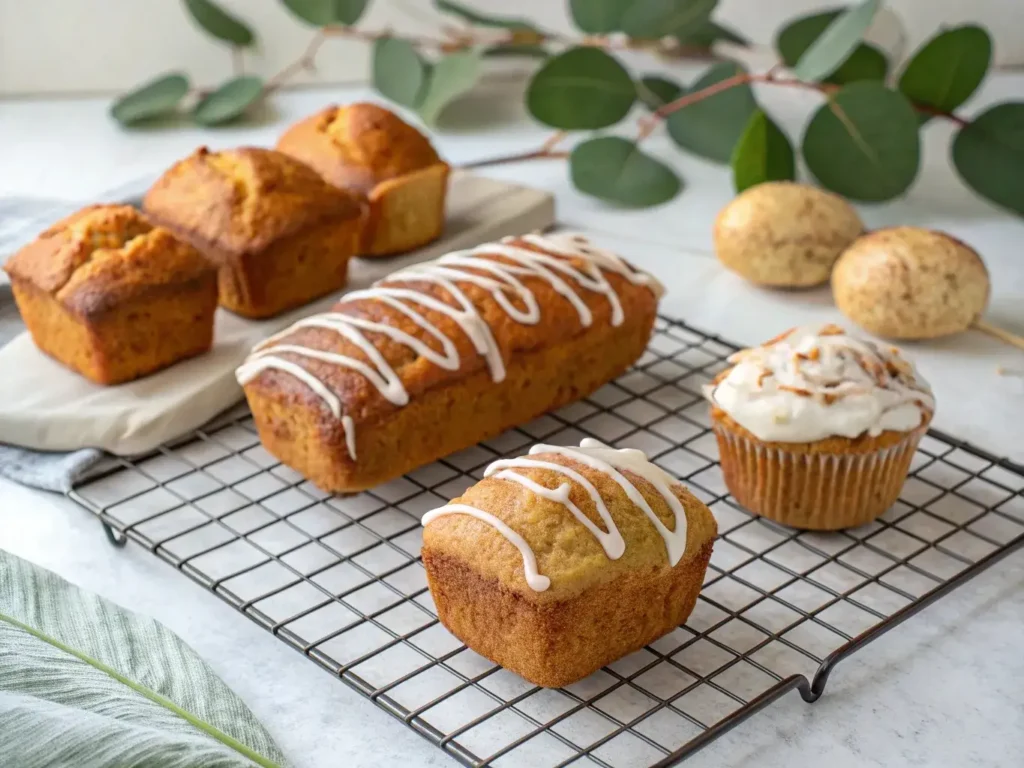
How to Make Gluten-Free Sweet Bread
For those avoiding gluten, sweet potato bread can easily be adapted to fit your dietary needs. By using alternative flours like almond, oat, or coconut flour, you can create a gluten-free version that’s just as moist and flavorful as the original. Keep in mind that gluten-free flours tend to absorb more liquid, so adjusting the wet ingredients, like adding an extra egg or a splash of milk, may be necessary.
Adding a teaspoon of xanthan gum can also help maintain the structure of the bread. This gluten-free option pairs wonderfully with a dollop of nut butter for a nutritious snack.
A Vegan Twist on Sweet Bread
Transforming sweet potato bread into a vegan-friendly recipe is surprisingly simple. Replace eggs with flaxseed or chia seed “eggs” (1 tablespoon of seeds mixed with 2.5 tablespoons of water per egg) to keep the bread moist and soft. Use plant-based milk, such as almond or oat milk, and swap out butter for coconut oil or vegan margarine.
To enhance the flavor, consider adding a touch of maple syrup or agave nectar. Vegan sweet potato bread is a great option for those seeking a plant-based treat without sacrificing taste or texture.
Turning Sweet Bread into a Savory Delight
If you’re looking for a unique twist, try turning sweet potato bread into a savory delight. By reducing the sugar and omitting the spices, you can create a bread that pairs perfectly with soups, salads, or even a hearty breakfast. Add ingredients like shredded cheese, chopped chives, or fresh rosemary to the batter for an extra burst of flavor.
For best results, balance the natural sweetness of the sweet potatoes with a pinch of salt and a touch of black pepper. This savory variation is ideal for those who prefer a more robust, less sugary loaf.
Sweet Potato Muffins and Mini Loaves
If you love the taste of sweet potato bread but want something more portable, consider making muffins or mini loaves. The batter works just as well for these smaller portions, and they bake faster usually in 18-22 minutes for muffins and 25-30 minutes for mini loaves.
These smaller treats are perfect for meal prepping, gifting during the holidays, or enjoying as a quick snack on the go. To make them extra special, sprinkle some chopped nuts or a streusel topping over the batter before baking.
Perfect Pairings for Sweet Bread
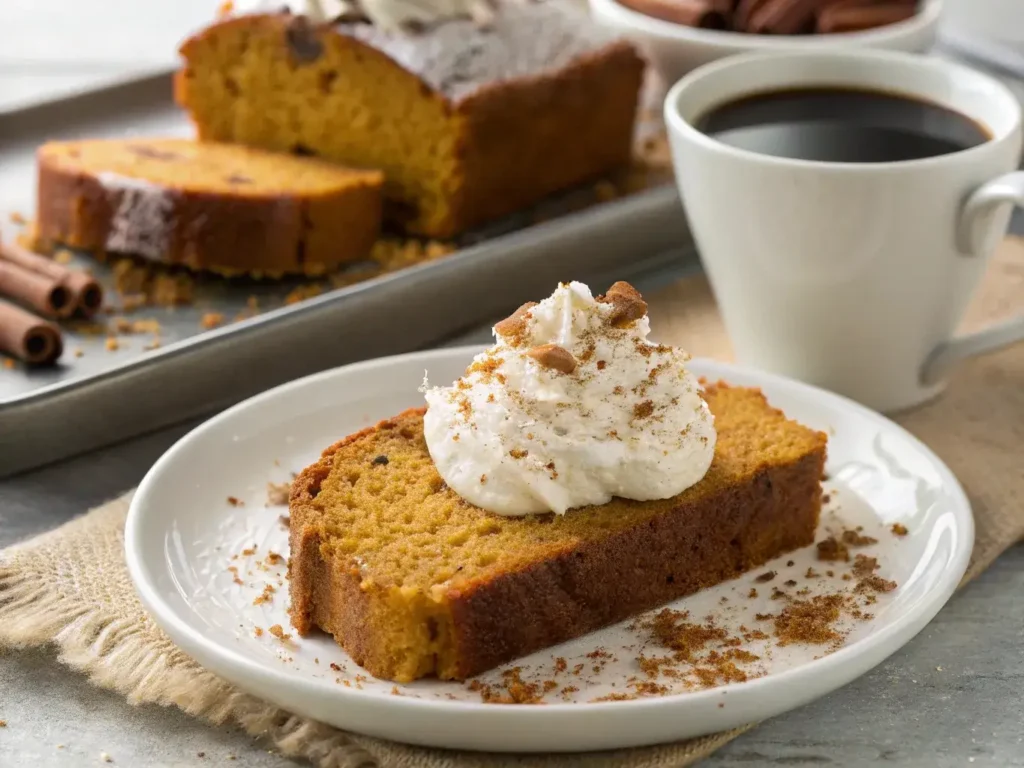
Classic Spreads for Sweet Potato Bread
Sweet potato bread is delicious on its own, but adding a spread can elevate it to a whole new level. Classic options like butter or cream cheese are always crowd-pleasers, enhancing the bread’s natural sweetness without overpowering it. For a richer flavor, try cinnamon honey butter or a dollop of mascarpone.
If you prefer something lighter, a thin layer of apple butter or a drizzle of maple syrup works beautifully. These simple additions complement the warm, earthy notes of sweet potato bread and make each bite more indulgent.
Drinks to Pair with Sweet Baked Goods
Pairing sweet potato bread with the right beverage can enhance your overall experience. Coffee and tea are popular choices, with spiced chai or cinnamon-infused coffee being particularly great matches for the bread’s warm spices. For a more decadent treat, enjoy it with hot cocoa topped with whipped cream.
During the warmer months, iced tea or a refreshing lemonade pairs well with a chilled slice of sweet potato bread. For brunch gatherings, consider serving it alongside mimosas or a lightly spiced mulled cider in colder seasons.
Sweet Potato Bread as a Dessert
Turn sweet potato bread into an irresistible dessert by adding a few finishing touches. A drizzle of cream cheese glaze or a light dusting of powdered sugar can transform the loaf into a show-stopping treat. To create a more decadent dish, top a warm slice with a scoop of vanilla ice cream and a sprinkle of chopped pecans.
For a unique twist, use sweet potato bread as a base for bread pudding. Cube the loaf, mix it with a custard base, and bake until golden for a comforting dessert that’s perfect for family dinners or holiday celebrations.
Creative Ways to Use Leftover Sweet Bread
If you find yourself with leftover sweet potato bread, don’t let it go to waste! One simple way to repurpose it is by turning it into French toast. The dense texture of the bread soaks up the egg mixture perfectly, creating a rich and flavorful breakfast option.
Another idea is to toast slices and use them as a base for open-faced sandwiches. For example, spread goat cheese on top and add caramelized onions for a savory snack. Alternatively, cube the bread and bake it into crunchy croutons for soups and salads, adding a unique sweet-savory contrast.
FAQs About Sweet Potato Bread
What are the benefits of sweet potato bread?
Sweet potato bread offers numerous health benefits thanks to its star ingredient: sweet potatoes. These nutrient-dense vegetables are packed with vitamins A and C, which support eye health and boost your immune system. Sweet potatoes are also rich in fiber, promoting healthy digestion and keeping you full for longer. Additionally, they contain antioxidants that can reduce inflammation and improve overall health.
By incorporating sweet potatoes into bread, you’re enjoying a baked good that’s not only delicious but also more nutritious than traditional options. Plus, the natural sweetness of sweet potatoes allows you to use less added sugar, making it a healthier choice.
Is potato bread good for you?
Potato-based breads, including sweet potato bread, are often a healthier alternative to regular white bread. The addition of sweet potatoes or potatoes enhances the bread’s nutritional profile by adding essential vitamins, minerals, and fiber. Compared to traditional white bread, potato bread tends to be lower in calories and higher in nutrients, making it a better choice for those looking to balance taste with health.
However, the overall nutritional value depends on the recipe and ingredients. To maximize the benefits, opt for recipes with whole-grain flours and minimal added sugars.
Is sweet potato bread good for diabetics?
Sweet potato bread can be a good option for diabetics when prepared with care. Sweet potatoes have a low glycemic index, meaning they release sugar into the bloodstream more slowly than other starchy foods. This makes them a better choice for managing blood sugar levels.
To make sweet potato bread more diabetic-friendly, reduce or eliminate added sugars, use whole-grain or almond flour, and add high-fiber ingredients like chia seeds or flaxseeds. Always consult with a healthcare professional to ensure the recipe aligns with your dietary needs.
Can I use sweet potatoes instead of flour?
While sweet potatoes cannot fully replace flour in baking, they can be used as a partial substitute or binding agent in certain recipes. In sweet potato bread, mashed sweet potatoes contribute moisture, sweetness, and a soft texture, allowing you to reduce the amount of flour needed.
For flourless baking, pair sweet potatoes with almond flour or oat flour to create a gluten-free option. This combination retains the structure of the bread while adding a nutritional boost. Experiment with ratios to find the perfect balance for your recipe.
Conclusion
Sweet potato bread is a versatile and nutritious treat that’s perfect for any occasion. Whether you’re looking for a healthier bread option, a diabetic-friendly recipe, or creative ways to incorporate sweet potatoes into your baking, this loaf delivers on all fronts. Packed with vitamins, fiber, and natural sweetness, it’s a delicious way to enjoy the benefits of sweet potatoes.
From classic recipes to innovative variations like gluten-free or savory loaves, there’s something for everyone. Pair it with your favorite spreads, serve it with a cup of coffee, or transform it into a dessert the possibilities are endless.

